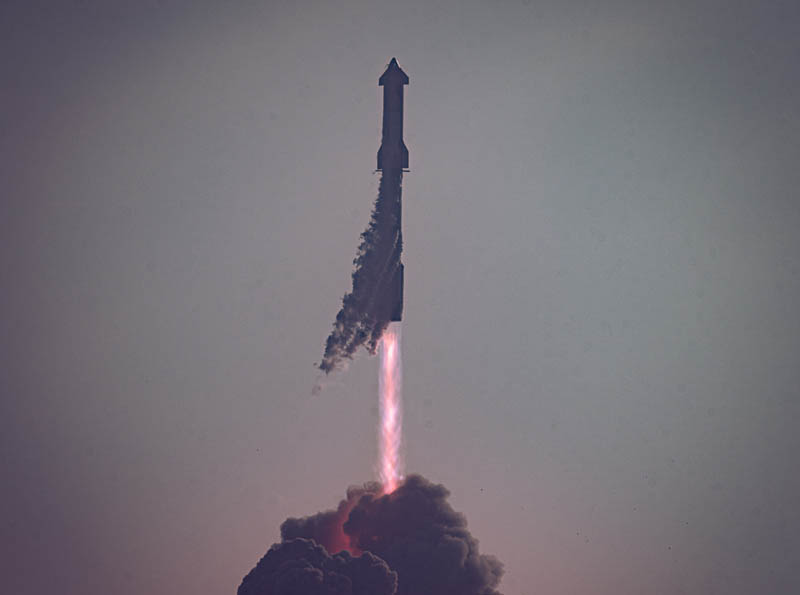SpaceX’s ambitious Starship program aims to develop a fully reusable rocket system capable of carrying crew and cargo to Earth orbit, the Moon, and Mars. While still in early testing, the massive Starship spacecraft and Super Heavy booster have progressed rapidly through several high-altitude test flights. Even with explosive endings, these flights have provided invaluable data to advance Starship’s design.
In a new blog post, SpaceX outlined key learnings and upgrades resulting from Starship’s second test flight on. The launch from Starbase, Texas saw the first full-duration burn of a Super Heavy booster with 33 Raptor engines. Starship then separated successfully and ignited its six Raptor engines before an issue with venting excess propellant caused a rupture, explosion, and loss of the vehicle at high altitude.
SpaceX determined the most likely cause of the Super Heavy booster’s destruction was blockage in the liquid oxygen supply filters. This restricted oxidizer flow to the Raptor engines, leading to failure of one engine that cascaded into a rapid unscheduled disassembly (explosion) of the booster. To improve reliability, SpaceX has implemented hardware changes to the oxygen tanks and upgraded filtration systems.
The Starship upper stage performed well until the planned venting of excess liquid oxygen through valves. A leak developed which led to combustion of vented propellant, loss of vehicle control, and the range safety system activating the flight termination system. SpaceX will address this with improved leak prevention, upgraded fire protection, and refined venting procedures.
Despite the explosive ending, the test achieved several key milestones. It was the first time a full 33-engine Super Heavy booster stage executed a complete ascent burn. Starship also became the largest spacecraft to reach outer space. The upgrades will now be incorporated into the next Starship and booster vehicles at Starbase ahead of the program’s third integrated test flight.
According to SpaceX, this rapid build, test, and refine approach is essential for developing a fully reusable rocket system quickly. The data from each test, successful or not, feeds directly into design changes and operational improvements for the next iteration. This “test fast and fly often” philosophy has served SpaceX well with its Falcon 9 and cargo Dragons.
With the power of 33 Raptor engines, Starship promises to become the most powerful operational rocket ever flown. The initial version stands 394 feet tall and 30 feet in diameter, dwarfing NASA’s Saturn V Moon rocket. SpaceX ultimately plans for Starship to carry over 100 metric tons to orbit and return to Earth for rapid reuse. Its capabilities could enable ambitious deep space missions as well as point-to-point travel around Earth.
While there is still much testing and development ahead, SpaceX continues to make rapid progress on realizing Starship’s full potential. Its test flight program demonstrates an iterative design approach focused on quick learning and improvement. The latest upgrades resulting from real flight data provide another stepping stone towards operational missions. Starship exemplifies SpaceX’s drive to push boundaries and develop transformative new space transportation.
